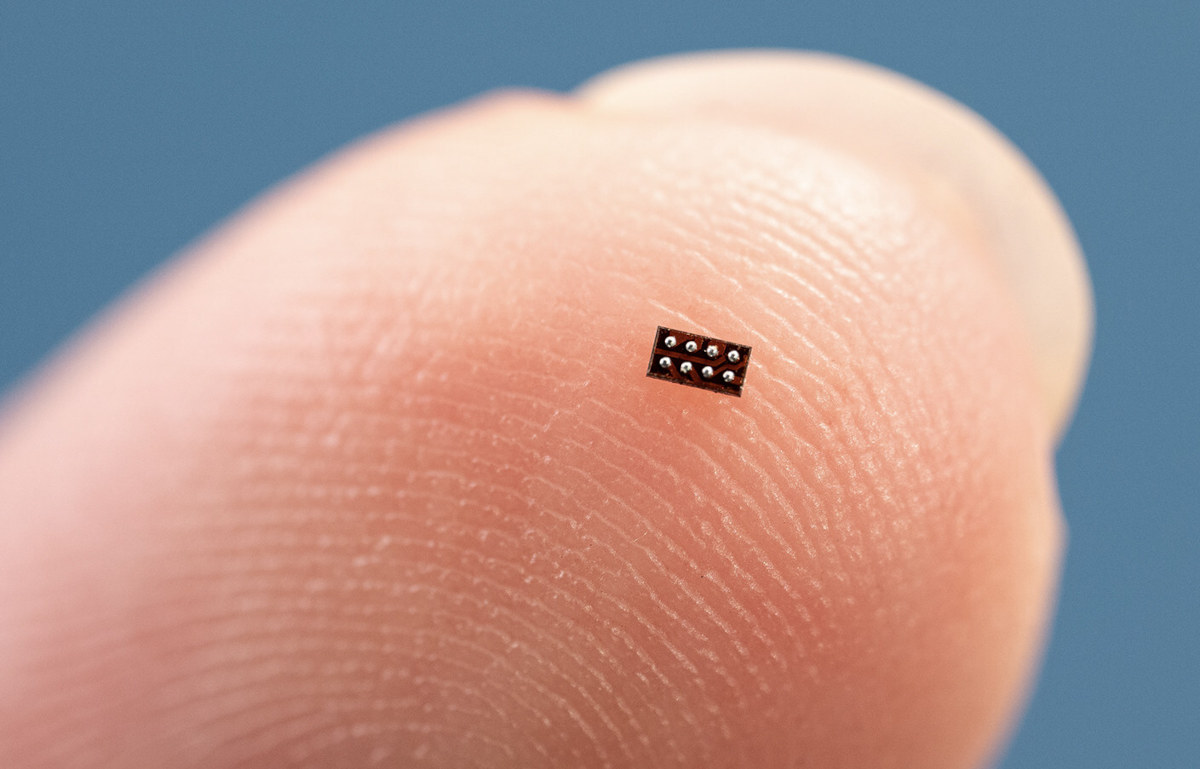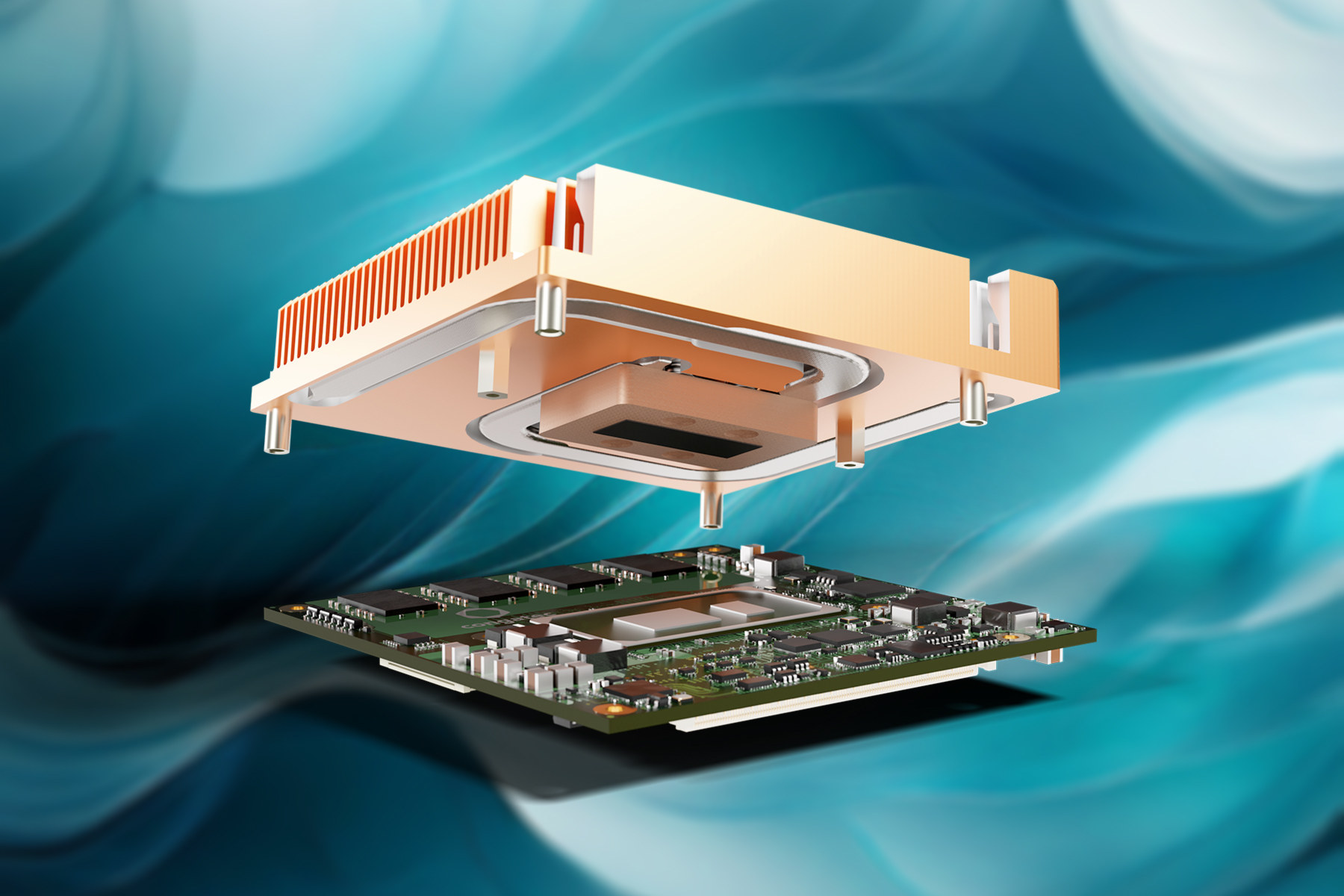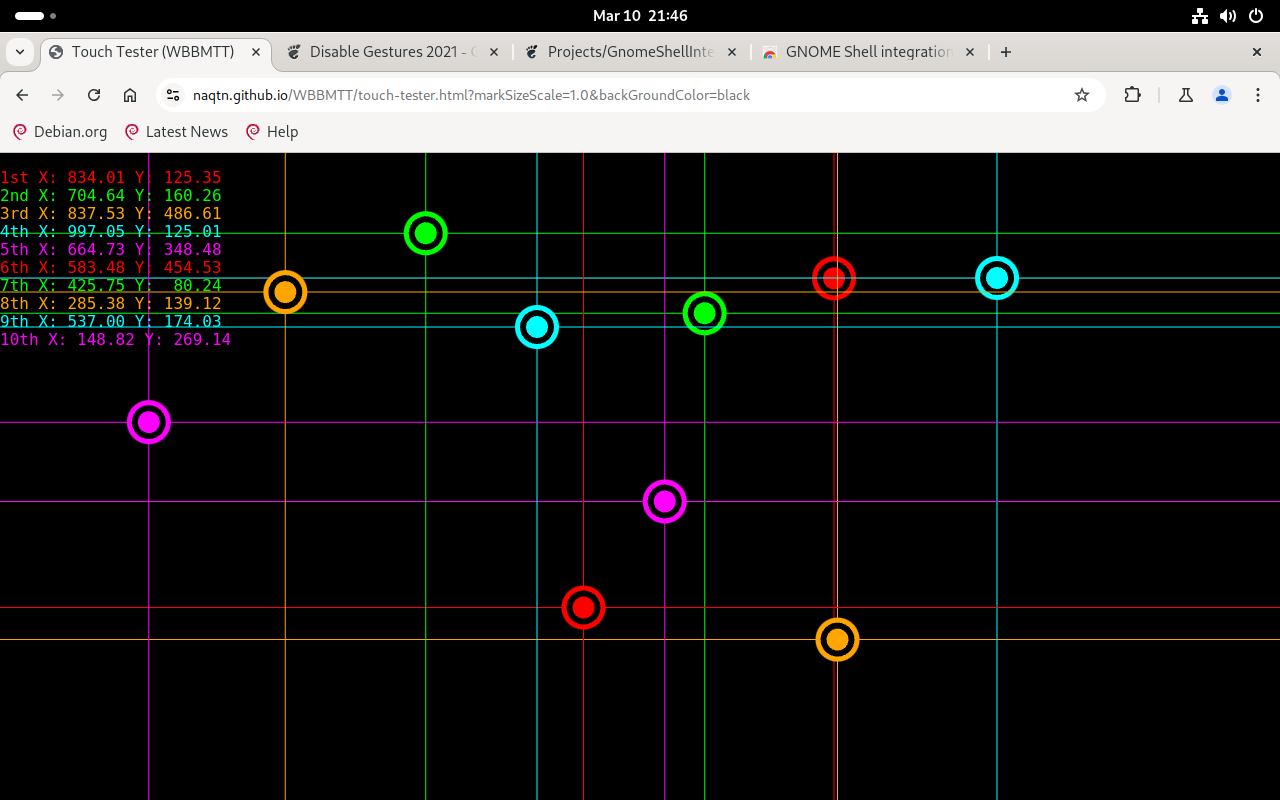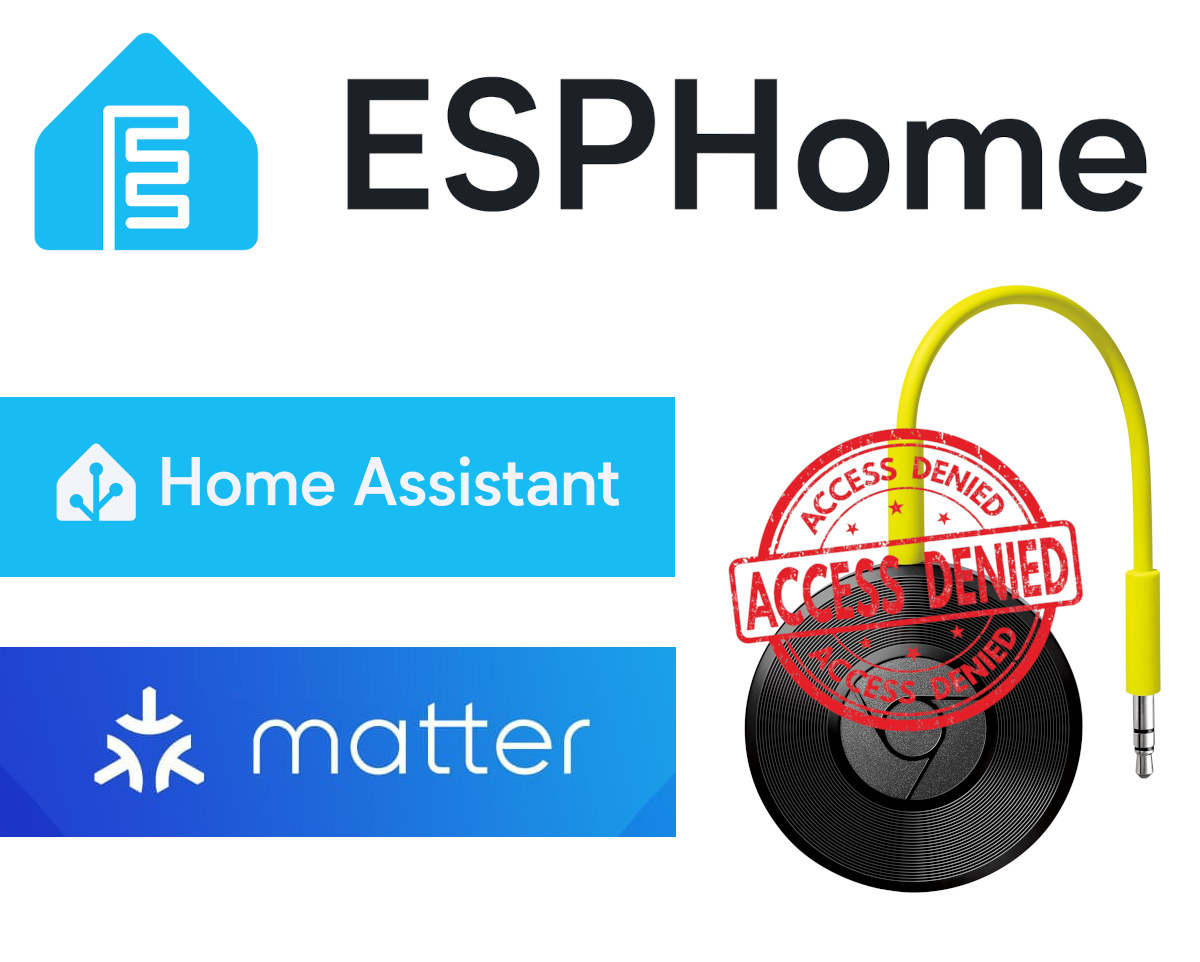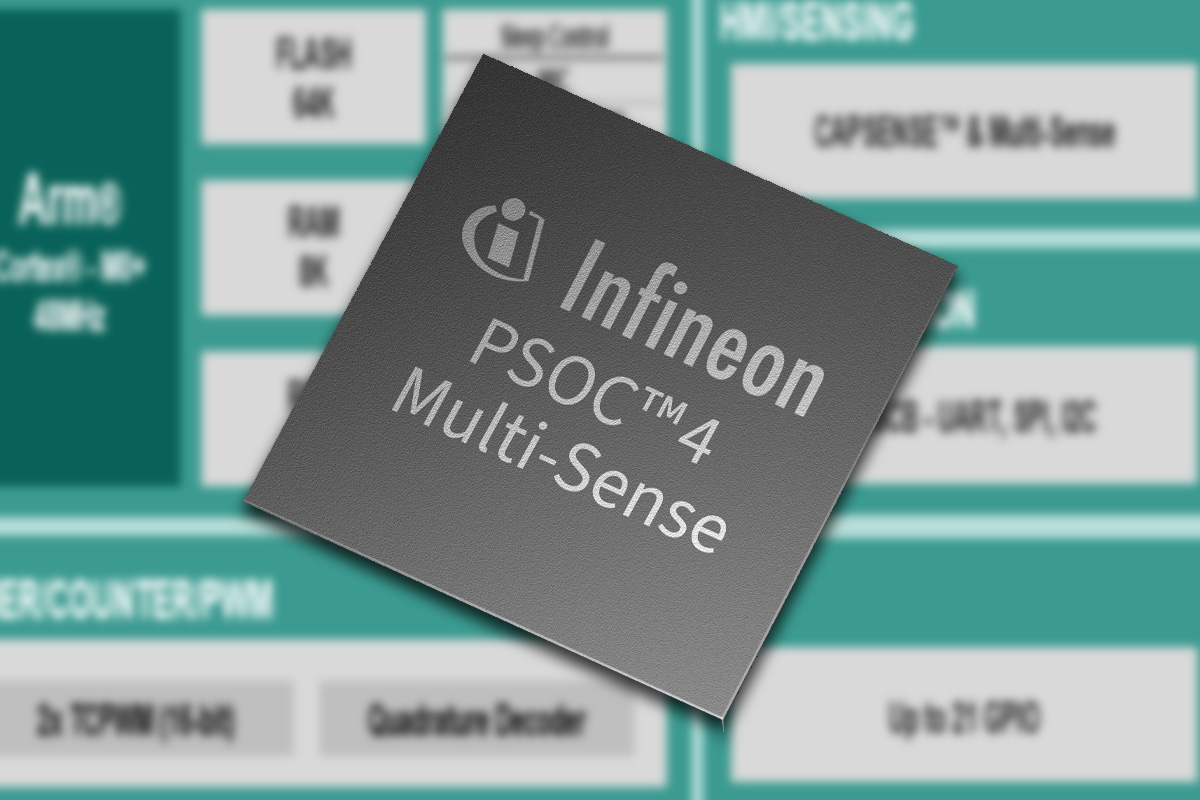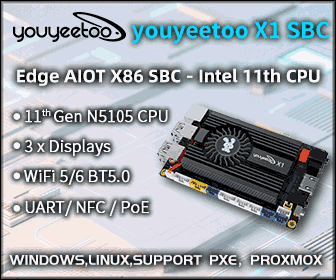Texas Instruments (TI) has expanded the MSPM0 Arm Cortex-M0+ MCU family with the MSPM0C1104 which is the world’s smallest microcontroller measuring just 1.38mm2 in its WCSP package, or about the size of a black pepper flake. Equipped with up to 16KB flash, 1KB SRAM, I/Os such as GPIO, I2C, UART, SPI, and a 12-bit analog-to-digital converter (ADC), the MSPM0C1104 is optimized for space-constrained applications such as medical wearables and personal electronics. TI MSPM0C1104 specifications: MCU Core – 32-bit Arm Cortex-M0+ CPU clocked at up to 24MHz Memory – 1KB of SRAM Storage – Up to 16KB of flash Peripherals Up to 18x GPIO (5V tolerant) 1x UART, 1 I2C, 1x SPI Analog 1x Analog-to-digital converter (ADC) with up to 10 total external channels, 1.7Msps at 10 bit or 1.5Msps at 12 bit with VDD as the voltage reference Configurable 1.4V or 2.5V internal ADC voltage reference (VREF) Integrated temperature sensor […]
Synaptics Astra SR series Arm Cortex-M55 MCUs feature Arm Ethos-U55 NPU, low-power Cortex-M4 core with microNPU
Synaptics unveiled an extension to its Astra Native AI platform with the new SR series of MCUs. This new product family, unlike the Astra SL series released last year, isn’t comprised of Linux-capable application processors. Instead, the Arm Cortex-M55 microcontrollers focus on providing high-performance, AI-native processing for Edge AI applications leveraging a built-in Arm Ethos-U55 NPU. Built on the Arm Cortex-M55 core and the Arm Ethos-U55 neural processing unit (NPU), these MCUs are optimized for multimodal applications, including vision, audio, and voice processing. As indicated in the MCU’s block diagram (see below), the SR series also features an optional low processing SoC unit featuring an Arm Cortex-M4 @ 100MHz and a Synaptics micro NPU engine. Such a provision in this MCU is what allows the three operation tiers the company offers with the MCU series: performance, efficiency, and ultra-low-power modes, allowing intelligence across various power levels. The MCU can switch […]
congatec unveils acetone-based heat pipe cooling solution for embedded systems operating in freezing temperatures
Consumer-grade heat pipe cooling solutions typically rely on water as a working fluid. This works great until a system needs to be used in freezing conditions, since the water could turn into ice and damage the pipe or even parts of the computer. That’s why congatec has unveiled a heat pipe cooling solution that relies on acetone as a working fluid in the heat pipes instead of water. It will work reliably at extreme sub-zero temperatures down to -40°C, and the company also claims the solution is insensitive to mechanical stresses such as shock and vibration. The acetone-based cooling solution will be used in conjunction with Computer-on-Module (COMs) from the company such as the COM Express Type 6 conga-TC675 or rugged-version conga-TC675r powered by up to 45W Intel Raptor Lake processor, as well as COM HPC Mini, Client or Server modules. Congatec explains that it will lower the cost of […]
Tips to use a touchscreen display with Raspberry Pi OS in 2025
I’ve just reviewed the SunFounder 10.1-inch touchscreen display with Raspberry Pi 5 running Raspberry Pi OS, and the experience was not quite as smooth as I had expected, so I’ll report some tips to save people time. The first is the software keyboard. Matchbox keyboard used to be the go-to solution, but two years ago, my preferred keyboard became the Onboard keyboard. Sadly, it’s not working so well with the latest Raspberry Pi OS using labwc Wayland window-stacking compositor, so now Raspberry Pi recommends squeekboard. It was not installed by default, but installation is fairly easy:
|
1 |
sudo apt install squeekboard |
It did not show up automatically when trying to type in a text field, maybe because I’m using a third-party touchscreen keyboard, but going to Raspberry Pi Configuration and setting On-screen Keyboard to Enabled always in the Display tab fixed that. I was able to type a URL/web search terms in the URL […]
Smart Home News – ESPHome 2025.2.0 Firmware, Home Assistant gets Matter certified, and (some) ChromeCast devices hit troubles
When I wrote about the Home Assistant 2025.3 release last week, it was pointed out to me that ESPHome firmware had its own release on February 19th, and in other Smart Home news, Home Assistant got Matter certified, and some ChromeCast devices temporarily stopped working which impacted video/audio streaming and integration with Google Home. Let’s have a quick look at all three pieces of news. ESPHome 2025.2.0 firmware ESPHome 2025.2.0 was released on February 19 implements audio components improvements with support for new components/hardware for better support of Espressif’s S3-Box products, new speaker components for advanced functionality when using Voice Assistant, a new speaker media player component for announcements and music streams, and a mixer speaker component to combine the two streams. The new release also supports alpha-blending images when using LVGL, and the Online Image Component was updated to add support for both BMP and JPEG image formats. It […]
Infineon PSoC 4000T multi-sense low-power MCU features capacitive, inductive, hover, and non-contact liquid sensing
Infineon Technologies has introduced the PSoC 4000T Multi-Sense low-power MCU, along with the upcoming PSoC 4100T Plus which will feature higher memory and more I/Os. These MCUs integrate fifth-generation CAPSENSE technology along with Multi-Sense capabilities, including proprietary inductive sensing, and non-contact liquid sensing solutions. This combination makes it easy to develop advanced HMI applications, such as touch-over-metal, hover touch, and accurate liquid-level detection. The MCU also supports SmartSense auto-tuning which eliminates manual calibration. It supports Always-On sensing with 10x lower power consumption and 10x higher SNR than previous generations. Additionally, the MCU enables hover touch detection through 2 cm air gaps and supports capacitive, inductive, and liquid sensing in a single device. The device also supports waterproofing for harsh environments and reduces system complexity and cost by integrating multiple sensing technologies into a single chip. Infineon PSoC 4000T specifications: MCU Core – 48 MHz Arm Cortex-M0+ CPU Memory – Up […]
Sapphire Edge+ VPR-5050 “AMD Embedded+” mini-ITX motherboard combines AMD Ryzen V2748 CPU and Versal AI Edge VE2302 SoC FPGA
Right in time for Embedded World 2025, Sapphire Technology has introduced the Edge+ VPR-5050 “AMD Embedded+” mini-ITX motherboard with AMD Ryzen V2748 octa-core CPU, and AMD Versal AI Edge VE2302 adaptive SoC that combines Cortex-A72 hard core with FPGA fabric. It’s an update to last year’s VPR-4616-MB mini-ITX motherboard with the same Versal VE2302 adaptive SoC, but a lower end AMD Ryzen R2314 quad-core processor. Two versions of the Edge+ VPR-5050 are available: the VPR-5050-MB and VPR-5050A-MB with the only obvious difference from the specifications being a 64GB eMMC flash on the “A” model, and the different RAM capacities (2x 4GB LPDDR4 vs 2x 8GB LPDDR4). Sapphire Edge+ VPR-5050 specifications: AMD Embedded+ Architecture Adaptive SoC Subsystem Main IC – AMD Versal AI Edge VE2302 with dual Arm Cortex-A72 core processor @ up to 1.6 GHz, dual-core Arm Cortex-R5F, 23 TOPS AI engine, FPGA fabric, etc… System Memory VPR-5050-MB – 2x […]
Review of SunFounder 10.1-inch touchscreen display for SBCs using Raspberry Pi 5 and Radxa ROCK 5B
SunFounder has just sent us one of their 10.1-inch touchscreen display designed for single board computers (SBCs) for review. It supports the Raspberry Pi family, but not only, thanks to a flexible design that allows mounting all sorts of boards with mounting holes that fit within an 85x70mm area. All you need is a board with HDMI output, a spare USB port for the touchscreen, and 5V USB-C input (up to 5A). So I’ll first test the SunFounder 10.1-inch touchscreen display with a Raspberry Pi 5 (85x56mm), then a larger Radxa ROCK 5 Model B Pico-ITX SBC (100 x 72mm). Since the display can also be used as an external touchscreen monitor, I’ll also try it with my laptop in Ubuntu 24.04 and Windows 11. SunFounder 10.1-inch touchscreen display specifications Key features and specifications: Display Type – IPS LCD Resolution – 1280×800 (16:10 aspect ratio) Touchscreen – 10-point capacitive Viewing […]


